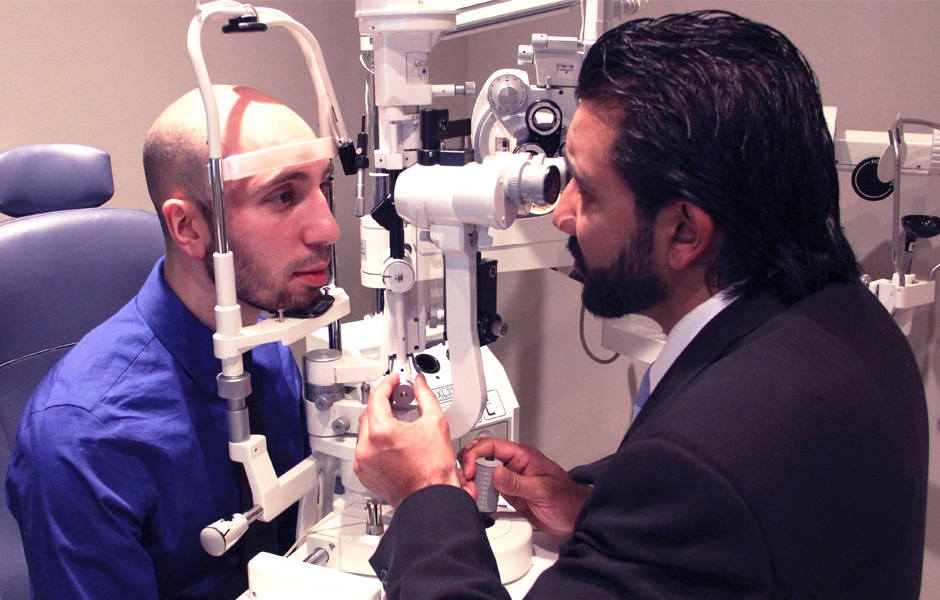Eye Center Andalusia: State-of-the-Art Look After All Ages
Eye Center Andalusia: State-of-the-Art Look After All Ages
Blog Article
Comprehending the Various Vision Modification Procedures Available for Clearer Sight
In the world of vision improvement procedures, a multitude of alternatives exist to resolve refractive errors and provide people with more clear sight. From the widely identified LASIK surgical procedure to much less invasive treatments like PRK and implantable lenses, the field of ophthalmology offers a series of methods tailored to fit various requirements and preferences. Each treatment comes with its very own set of considerations, advantages, and prospective threats. Comprehending the subtleties of these vision modification techniques is vital for making informed choices about one's visual health and wellness. Allow's discover the ins and outs of these treatments and dropped light on the course to attaining improved vision clarity.
LASIK Surgical Procedure
LASIK surgical treatment is a typical refractive procedure used to fix vision troubles such as farsightedness, astigmatism, and nearsightedness. This surgical technique, which stands for Laser-Assisted in Situ Keratomileusis, aims to improve the cornea to boost how light is concentrated on the retina, inevitably improving vision clearness.
One of the main benefits of LASIK surgery is the rapid renovation in vision experienced by people. Lots of individuals discover a significant enhancement in their sight immediately after the treatment. Additionally, many patients report marginal pain and discomfort throughout the surgery and healing period. The recuperation time for LASIK is fairly quick, with numerous individuals going back to their everyday activities within a day or 2 post-operation. Generally, LASIK surgical procedure is a preferred option for individuals looking for a long-term remedy for their vision problems.
PRK Treatment

PRK is a suitable choice for people with slim corneas or those at a greater danger of eye injuries, as it does not include developing a corneal flap. The recuperation process for PRK is slightly longer compared to LASIK, as the epithelium needs time to restore. People might experience discomfort and blurry vision for a few days complying with the treatment.
Despite the longer recovery time, PRK can produce exceptional outcomes in vision renovation, making it a valuable choice for those that might not appropriate prospects for LASIK surgical procedure. - Eye Center Andalusia
Implantable Lenses
In comparison to PRK where the cornea is improved straight, implantable lenses use one more technique for correcting vision by inserting man-made lenses inside the eye. This procedure is specifically valuable for people with high levels of farsightedness, nearsightedness, or astigmatism who may not be suitable prospects for laser surgical procedures like LASIK or PRK.
Implantable lenses, additionally referred to as phakic intraocular lenses, work by supplementing the eye's natural lens with an artificial one. These lenses can be positioned before the all-natural lens (anterior chamber) or behind the iris and before the all-natural lens (posterior chamber) By adjusting the power and positioning of these lenses, ophthalmologists can successfully correct refractive mistakes and improve visual skill.
One advantage of implantable lenses is that they are exchangeable and detachable, offering versatility for future changes. As with any type of surgical treatment, there are risks included, such as infection or cataract formation. Patients taking into consideration implantable lenses ought to talk to an eye care professional to figure out the most ideal choice based upon their individual demands and eye health.
Corneal Rings

The treatment for inserting corneal rings is relatively quick and minimally invasive, typically done as an outpatient treatment. Throughout the surgical procedure, the eye doctor makes a tiny laceration in the cornea and inserts the rings at a specific depth. Once in place, the rings help to reshape the cornea, providing a smoother surface for light to enter the eye, which can result in clearer vision.
Corneal rings are considered a reversible treatment, as they can be gotten rid of or changed if essential. While they might not totally get rid of the requirement for glasses or get in touch with lenses, corneal rings can substantially boost vision quality and total aesthetic comfort for individuals with keratoconus or various other corneal abnormalities.
Refractive Lens Exchange
Following the adjustment of corneal irregularities with procedures like corneal rings, another vision correction strategy that can attend to refractive mistakes is Refractive Lens Exchange (RLE) RLE pop over here is an operation that entails replacing the eye's natural lens with a fabricated intraocular lens (IOL) to remedy refractive errors such as nearsightedness, presbyopia, and farsightedness. This treatment is especially advantageous for people who might not appropriate prospects for treatments like LASIK or PRK because of variables such as thin corneas or high refractive mistakes.
RLE is comparable to cataract surgical procedure, as both involve getting rid of the eye's natural lens; nonetheless, in RLE, the lens is clear, not cloudy as in cataracts. The artificial lens implanted during RLE can be personalized to address the person's specific refractive error, giving clear vision at different ranges. Healing time for RLE is reasonably quick, and individuals can anticipate enhanced vision quickly after the procedure. Just like any kind of surgical procedure, possible threats and issues exist, so a complete consultation with an eye care expert is essential to figure out if RLE is the appropriate vision modification alternative.
Final Thought

In the realm of vision adjustment procedures, a wide range of options exist to resolve refractive errors and provide people with clearer view.LASIK surgical treatment is a typical refractive treatment utilized to correct vision troubles such as nearsightedness, astigmatism, and farsightedness.While additionally a common refractive treatment, the PRK (Photorefractive Keratectomy) technique differs from LASIK surgery in its technique to correcting vision issues.Adhering to the adjustment of corneal abnormalities with procedures like corneal rings, one find this more vision improvement method that can resolve refractive errors is Refractive Lens Exchange (RLE) LASIK surgical treatment, PRK treatment, implantable lenses, corneal rings, and refractive lens exchange are all options that can attend to different vision problems.
Report this page